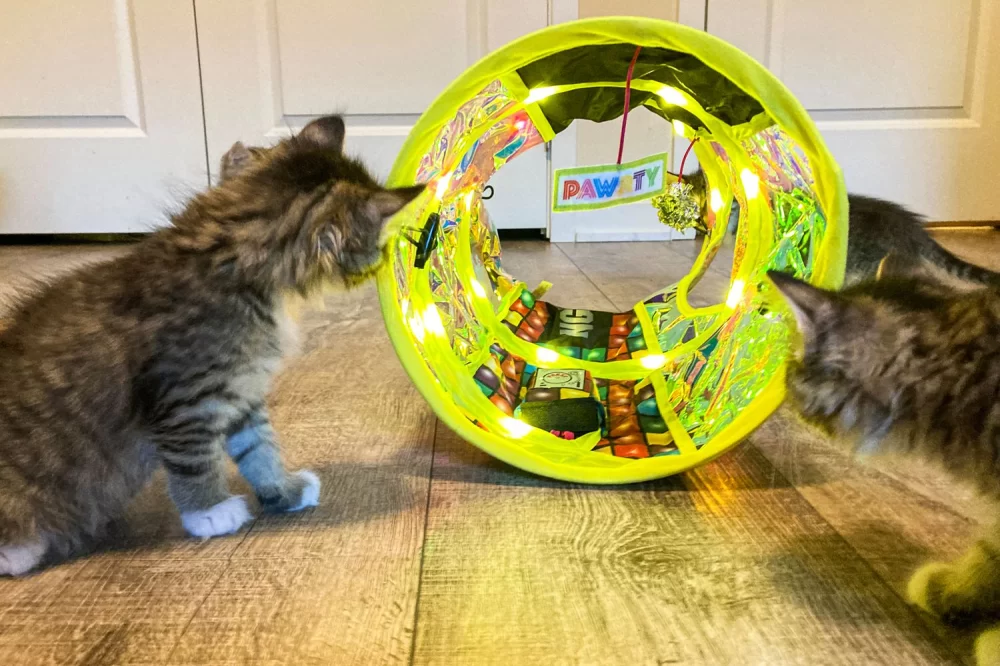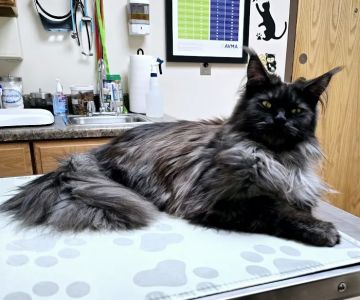- Understanding Feline Hunting Instincts
- Features of Ideal Toys for Hunting Cats
- Top Toys for Cats Who Like to Hunt and Play
- Real-Life Examples of Successful Cat Toys
- How to Choose the Right Toy for Your Cat
- Why Consulting Hidden Brook Veterinary Helps
1. Understanding Feline Hunting Instincts
Cats are natural hunters, a trait inherited from their wild ancestors. Even domestic cats retain strong predatory instincts that drive them to stalk, chase, and pounce. This instinct isn’t just about food; it’s a crucial part of their mental and physical well-being. When cats engage in hunting behaviors, they release energy, reduce stress, and satisfy innate needs that contribute to their happiness.
Recognizing these instincts helps pet owners understand why cats can become restless or destructive without proper outlets. Toys designed to mimic prey movements and encourage stalking can make a significant difference. This explains why the best toys for cats who like to hunt and play focus on interactive elements that stimulate these natural behaviors.
1.1 The Psychology Behind Hunting Play
When a cat “hunts” a toy, it goes through stages: stalking, chasing, pouncing, and capturing. Toys that incorporate unpredictability or simulate erratic prey movement engage cats on a deeper level. This not only entertains them but also sharpens their reflexes and mental acuity. Without such stimulation, many cats develop boredom-related problems, including aggression or depression.

286 Wilmington West Chester Pike, Chadds Ford, PA 19317, USA
See Details1.2 Physical and Emotional Benefits
Active play supports healthy weight, muscle tone, and joint mobility, especially important for indoor cats with limited space. Emotionally, hunting play reduces anxiety and improves the cat-owner bond through interactive sessions.
2. Features of Ideal Toys for Hunting Cats
Choosing the best toys for cats who like to hunt and play means looking beyond aesthetics. The following features are essential:
2.1 Realistic Movement and Texture
Toys that move unpredictably or have textures mimicking prey animals (feathers, fur, crinkly materials) spark a cat’s interest. For example, feather wands and motorized mice effectively replicate the fluttering and scurrying of birds or rodents.
2.2 Interactive and Engaging Design
Self-play toys or those that respond to a cat’s touch encourage longer engagement. Puzzle feeders combined with hunting toys provide mental stimulation alongside physical activity, adding a rewarding element that keeps cats coming back.
2.3 Safety and Durability
Because cats use claws and teeth aggressively during play, toys must be non-toxic, sturdy, and free from small parts that could cause choking. Durable construction ensures the toy withstands vigorous play sessions.
3. Top Toys for Cats Who Like to Hunt and Play
Several toys consistently receive high praise from cat owners and experts alike. Here are some standout options:
3.1 Feather Wands and Fishing Pole Toys
These toys allow owners to actively engage their cats, simulating prey movement by flicking or dragging feathers. They also strengthen the human-animal bond.
3.2 Laser Pointers
While excellent for encouraging chasing behavior, laser pointers require moderation and should always be paired with tangible toys to satisfy the cat’s need to “catch” prey and avoid frustration.
3.3 Motorized Toys
Battery-operated toys that move erratically, like robotic mice or fluttering butterflies, capture a cat’s attention for extended periods, providing autonomous play that keeps them stimulated even when alone.
3.4 Puzzle Feeders with Hunting Elements
Combining play and reward, these feeders require cats to “hunt” for their food, mentally engaging them and promoting natural foraging behaviors.
4. Real-Life Examples of Successful Cat Toys
Consider Luna, a young indoor cat who was restless and prone to destructive scratching. After her owner introduced interactive feather wands and a motorized mouse, Luna’s behavior transformed dramatically. She became more relaxed and engaged, even sleeping better at night. Her owner credits these toys for channeling Luna’s hunting energy into positive play.
Similarly, Max, an older cat with declining mobility, benefited from slower, interactive toys like puzzle feeders that incorporated gentle batting and pawing, keeping his mind sharp and body active without strain.
5. How to Choose the Right Toy for Your Cat
Selecting the perfect toy involves considering your cat’s personality, age, and activity level. Younger cats often prefer high-energy toys that mimic fast prey, while seniors may appreciate slower, interactive options. Observing your cat’s play style can guide choices—does your cat prefer stalking from a distance, or pouncing up close?
It’s also vital to rotate toys regularly to maintain novelty and interest. Introducing new toys slowly and supervising initial play sessions ensures safety and maximizes enjoyment.
5.1 Tips for Effective Play Sessions
Keep play sessions short but frequent, mimicking the natural bursts of hunting activity in the wild. Always end with a tangible “catch” to satisfy your cat’s predatory drive.
6. Why Consulting Hidden Brook Veterinary Helps
For cat owners seeking personalized advice on the best toys for cats who like to hunt and play, Hidden Brook Veterinary offers expert guidance tailored to your feline’s needs. Their experienced team can recommend toys and enrichment strategies that fit your cat’s unique personality and health conditions.
Beyond toys, they provide comprehensive care and behavioral consultations, ensuring your cat stays happy, active, and healthy. Whether you’re looking for product recommendations, behavior tips, or professional evaluations, Hidden Brook Veterinary is a trusted resource to help you support your cat’s natural instincts and wellbeing.











